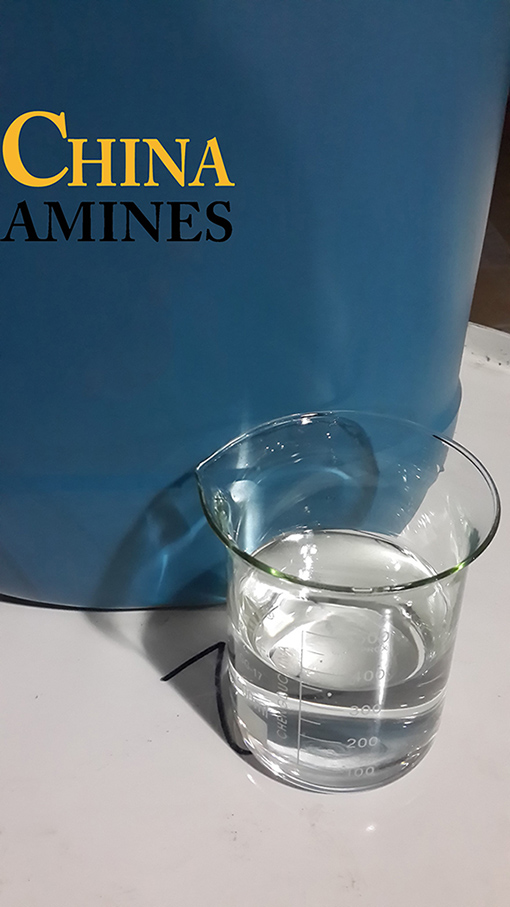1. Chemical Structure and Properties
Molecular Formula: C₁₄H₃₀O₃
Structural Formula:
HO-(CH₂CH₂O)₂-CH₂CH(CH₂)₃CH(CH₃)₂
A branched glycol ether composed of two ethylene oxide units linked to an isooctyl (2-ethylhexyl) group, terminated by a hydroxyl group.
Physical Properties:
Appearance: Clear, colorless to pale yellow viscous liquid with a mild ether-like odor.
Boiling Point: 280–285°C; Density: 0.92–0.94 g/cm³; Vapor Pressure: <0.001 mmHg at 25°C.
Solubility: Insoluble in water; miscible with alcohols, esters, and hydrocarbons.
Chemical Properties:
Hydrolysis Stability: Resistant to hydrolysis under neutral conditions; degrades in strong acids/bases to ethylene glycol and isooctanol.
Thermal Stability: Stable up to 200°C; decomposes above 250°C, releasing aldehydes and ethylene oxide.
Flammability: Combustible (flash point: ~130°C).
2. Industrial Applications
Coatings & Inks:
High-Boiling Solvent: Enhances substrate wetting and flow in high-temperature industrial coatings (e.g., automotive, aerospace).
Plasticizer: Improves flexibility in epoxy and polyurethane adhesives.
Cleaning Products:
Heavy-Duty Degreaser: Effective in removing stubborn oils, greases, and lubricants from machinery and metal surfaces.
Personal Care:
Emollient & Stabilizer: Used in high-end cosmetics (e.g., creams, sunscreens) for its non-greasy texture and skin adhesion.
Chemical Synthesis:
Intermediate: Produces surfactants and specialty esters for lubricant additives.
3. Safety and Toxicology
Health Hazards:
Acute Exposure:
Skin Contact: Mild irritation (rabbit skin LD₅₀: >5,000 mg/kg); negligible systemic absorption.
Inhalation: Low volatility minimizes risk (TLV-TWA: Not established); handle as nuisance vapor.
Ingestion: Low toxicity (oral LD₅₀ rat: >10,000 mg/kg); gastrointestinal discomfort.
Chronic Effects:
Reproductive Toxicity: No teratogenicity observed in OECD 414 studies.
Organ Toxicity: Negligible hepatotoxicity or nephrotoxicity in subchronic rodent studies.
Protection Measures:
PPE: Nitrile gloves, safety goggles, and general ventilation.
Storage: Stable in HDPE containers; store away from oxidizers.
4. Environmental and Regulatory Compliance
Environmental Impact:
Biodegradability: Slow (OECD 301F: <30% in 28 days); moderately persistent in soil and water.
Aquatic Toxicity: LC₅₀ (fish, 96h): >100 mg/L; EC₅₀ (daphnia): >50 mg/L.
Bioaccumulation: Moderate (log Kow: ~3.5).
Regulatory Frameworks:
EU:
REACH: Registered with no SVHC listing; CLP classification Not Hazardous.
USA:
EPA: Exempt from VOC status under 40 CFR 51.100(s)(1); TSCA-listed.
China:
GB 13690-2009: Classified as General Chemical (non-hazardous).
Waste Management:
Incinerate in approved facilities; landfill disposal permitted for neutralized residues.
5. Case Studies and Application Insights
Case 1: High-Temperature Aerospace Coatings (Boeing, 2023):
Challenge: Develop a coating solvent stable at >150°C for jet engine components.
Solution: Diethylene glycol isooctyl ether (5% w/w) improved resin solubility and thermal stability.
Result: Achieved 200°C operational stability (ASTM D2481) and 20% lower VOC emissions.
Case 2: Eco-Friendly Industrial Cleaners (3M, 2022):
Process: Replaced chlorinated solvents with diethylene glycol isooctyl ether in precision degreasers.
Impact: Reduced hazardous waste by 50% and met OSHA workplace safety standards.
Comparative Analysis:
DGIE vs. EGBE:
Pros: Lower toxicity, higher thermal stability, and reduced flammability.
Cons: Higher viscosity (~30 mPa·s) limits use in low-viscosity formulations.
DGIE vs. Dipropylene Glycol Methyl Ether:
Pros: Better compatibility with hydrophobic substrates; lower evaporation rate.
Cons: Less effective in water-based systems.
Specifications:
Diethyl ether) is an ether organic compound with the simplified structural formula:
(C2H5)2O
{\displaystyle {\ce {(C2H5)2O}}} (can be abbreviated as
Et2O
{\displaystyle {\ce {Et2O}}}[Note 1]). Ether is a colorless, flammable and highly volatile liquid. When exposed to sparks, static electricity, high temperature, or oxidants (such as perchloric acid, chlorine, oxygen, ozone, etc.), there is a danger of combustion and explosion; its odor is irritating and contains It has a sweet taste and was once used as an inhaled general anesthetic and a common raw material for drug processing. Ether is also a micro-polar organic solvent commonly used in laboratories. It is quite stable when isolated from air. When exposed to oxygen during long-term storage, it will gradually form an explosive hydroperoxide ether mixture [Note 2]. Ether is slightly soluble in water and easily soluble in ethanol, benzene, chloroform and petroleum ether.


